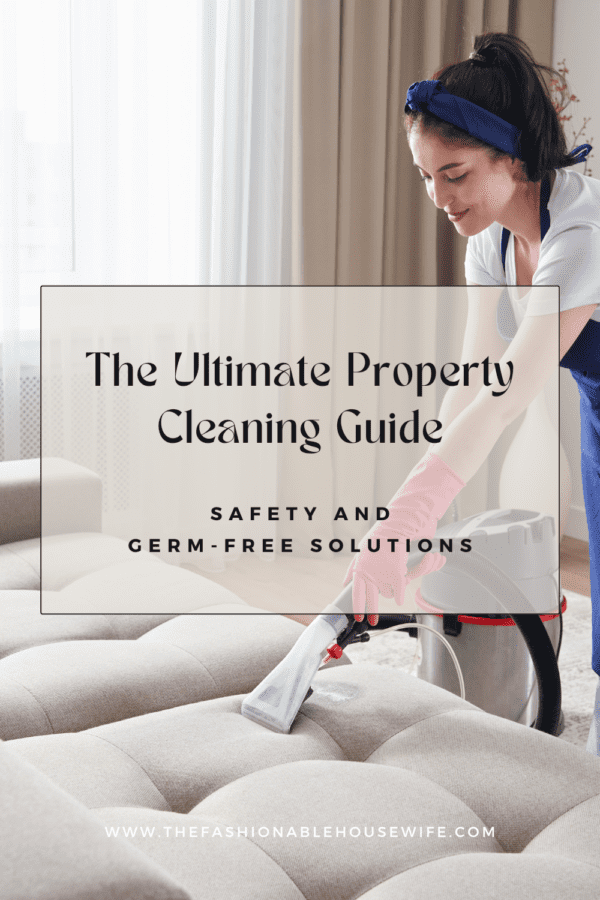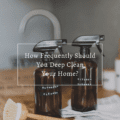
Keeping our living spaces clean and free from germs is essential for our health and well-being. Whether you’re a homeowner, a professional cleaner, or someone looking to maintain a hygienic environment, this guide will equip you with the knowledge and techniques to achieve a safe and germ-free space. It will provide valuable insights and practical tips to ensure safety and cleanliness during your property cleaning endeavors.
Understanding Safety Measures
When it comes to property cleaning, prioritizing safety is of utmost importance. Personal Protective Equipment (PPE) is vital in ensuring this safety. It is specifically designed to protect individuals from potential hazards during cleaning tasks. A thorough understanding of the various types of PPE and utilizing them correctly is essential. UrbanMop recognizes the significance of employing PPE to guarantee a safe and secure cleaning experience for professionals and clients in the context of property cleaning.
Firstly, there are various types of PPE commonly used in cleaning. Gloves are a must-have for protecting your hands from chemicals and potential cuts. Disposable gloves are suitable for one-time use, while reusable ones should be properly washed and dried. Eye protection, such as safety goggles or glasses, shields your eyes from splashes or airborne particles. Depending on the cleaning task, you may need a face mask or respirator to prevent inhalation of harmful substances.
Remember, PPE is only effective if used correctly. Ensure gloves fit snugly and cover your wrists. Avoid touching your face or adjusting the mask while wearing it. Furthermore, it is vital to highlight the need to properly dispose of worn Personal Protective Equipment (PPE) as a key safeguard to prevent contamination. It is critical to follow particular recommendations for each type of PPE to ensure its safe disposal.
Finally, when it comes to cleaning electrical equipment, emphasizing electrical safety becomes critical. Before beginning the cleaning operation, separate the devices from the power source by disconnecting them. Furthermore, extreme caution should be exercised by preventing any contact between the equipment and water or wet hands. Cords should be handled with caution to avoid tripping risks as well as potential damage.
Germ-Free Cleaning Solutions
In order to keep a property free of hazardous bacteria, it is crucial to have a spotless and clean atmosphere. Integrating efficient cleaning methods that particularly target germs and promote thorough cleanliness is essential to achieving this goal.
Following standard cleaning procedures is the cornerstone of germ-free cleaning. It is essential to sufficiently prepare the cleaning area before beginning any cleaning activity. This comprises cleaning the area, setting up the cleaning materials, and ensuring enough ventilation. Dusting and vacuuming should be done thoroughly and meticulously, with a specific focus on frequently missed places including corners, vents, and baseboards. To avoid the spread of germs, proper waste disposal is also necessary, mandating the use of sealed bags and the rapid disposal of such bags.
Cleaning should be maintained with special focus in areas like kitchens and places used for food preparation. As a preventative strategy against the buildup of bacteria, kitchen surfaces such as worktops, cutting boards, and appliances should be regularly sanitized. Maintaining a germ-free workplace requires proper management of kitchen items and appliances, such as thorough cleaning after each use. The danger of germ transmission is further reduced by following food safety regulations, which include keeping food at the proper temperatures and preventing cross-contamination. Moreover, in environments where pest control is a concern, partnering with professional services like Turner Pest Control in Lehigh Acres, FL can provide comprehensive solutions to ensure a hygienic and pest-free workspace.
The toilets and bathrooms are infamous for being a germ breeding area. Cleaning bathroom fixtures like sinks, toilets, and showers using the right disinfectants successfully gets rid of bacteria and stops mold and mildew from growing. In these places, adequate ventilation is also essential to limit moisture levels, which can encourage the growth of germs and mold.
Bedrooms and living spaces shouldn’t be overlooked. Dirt, allergies, and bacteria are eliminated by routinely cleaning carpets and upholstery. The usage of air purifiers and surface dusting to maintain optimum air quality makes for a cleaner and healthier living environment.
Importance of disinfection
Maintaining a clean and germ-free environment hinges on the utmost significance of disinfection. This pivotal process entails eliminating or reducing microorganisms, including bacteria, viruses, and fungi, from surfaces and objects. The practice of disinfection holds vital importance for various compelling reasons.
Foremost, disinfection serves as a crucial preventive measure against the proliferation of infectious diseases. Numerous harmful pathogens can persist on surfaces for extended durations, silently waiting to infect unsuspecting individuals. The risk of contamination and transmission can be significantly mitigated by diligently disinfecting frequently touched surfaces such as doorknobs, light switches, countertops, and bathroom fixtures.
It is imperative to recognize that proper disinfection must be coupled with regular cleaning. While cleaning primarily addresses visible dirt and debris, disinfection specifically targets and eradicates invisible microorganisms that can instigate illnesses. By incorporating both practices into our cleaning routines, we can uphold a hygienic and safe environment for ourselves and others.
Conclusion
Creating a safe and clean living space is achievable by implementing safety measures such as proper chemical handling and personal protective equipment. Utilizing germ-free cleaning solutions for different areas of your property is also important. Regular cleaning and disinfection, along with good hygiene practices, are critical for maintaining a healthy living environment for yourself and others.






